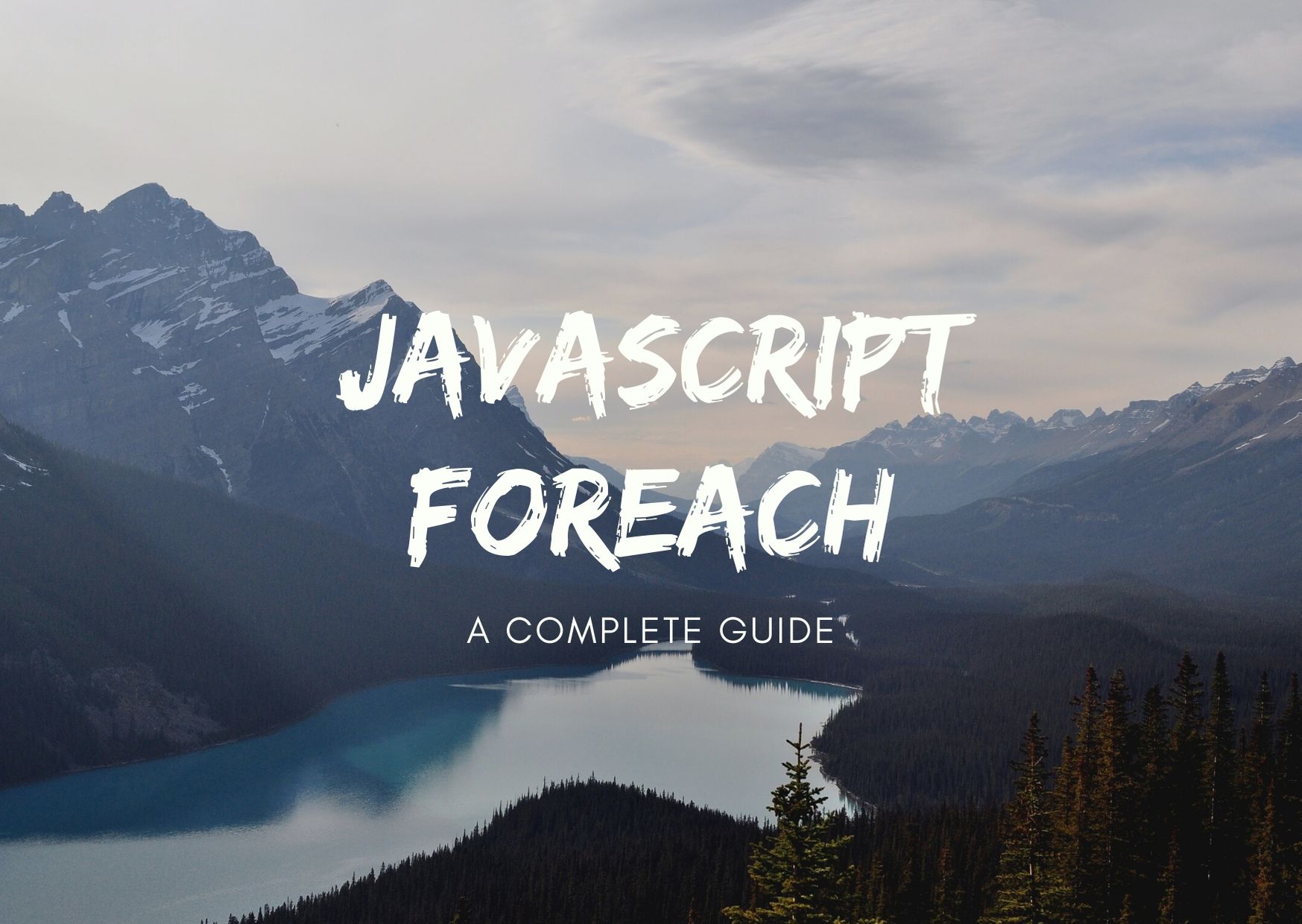JavaScript forEach - the complete guide
The forEach method is a method that you can call on Arrays.

It helps you iterate (loop) over array items one by one. Here's an example:
const apps = ['Calculator', 'Messaging', 'Clock'];
apps.forEach(app => {
console.log(app);
});If the arrow => { ... } is new to you, that's called an arrow function. In this particular example, you will not see a difference between using an arrow function and a regular function, so here's how you can iterate without an arrow function:
const apps = ['Calculator', 'Messaging', 'Clock'];
apps.forEach(function(app) {
console.log(app);
});The output (in the console) of both of these snippets of code is the following:
"Calculator"
"Messaging"
"Clock"
Notice how the callback function passed to the forEach is being called for every single element of the array.
Best practices permalink
A couple of best practices to keep in mind:
- Try to have the name of the array in plural (example: apps)
- Then the first argument inside the forEach should be in singular (example: app)
- Always start with a
console.log(item)as this helps you visualise the items that you just iterated over (one by one).
You can also practise reading this in English as following:
We have an apps array and we iterate over it one by one. Now we can start thinking about a single item of that array, which is one app
NodeList permalink
When working with the DOM, it's common to use the document.querySelectorAll(css_selector) method. This method returns a NodeList which is an element that looks like an array (but is not an array).
However the NodeList supports the same .forEach method. So you can use what you learned above to iterate over items in the NodeList, here's an example:
const items = document.querySelectorAll('ul li');
items.forEach(item => {
console.log(item);
});Iterate over array of objects permalink
A common data structure that you will be working with is arrays of objects, for example:
const users = [
{
id: 1,
name: 'Alex'
},
{
id: 2,
name: 'Sam'
}
];Iterating over this array is the same as above, however keep in mind that the item you will get will be an object.
users.forEach(user => {
console.log(user); // an object
console.log(user.id);
console.log(user.name);
});Because every user (or item) is an object, you can access the keys id and name by calling user.id and user.name.
There are also other array methods that work similarly, like the .map but that's for another article.
Using the index in the forEach permalink
You can also access the index of every item of an array inside the callback passed to forEach.
const apps = ['Calculator', 'Messaging', 'Clock'];
apps.forEach(function(app, index) {
console.log(index, app);
});This will log:
0 "Calculator"
1 "Messaging"
2 "Clock"
Checkout my other post on javascript forEach index for more details.
Early exit pattern permalink
Using the element index it is possible to skip the callback for certain indices, for example:
const apps = ['Calculator', 'Messaging', 'Clock', 'Maps'];
apps.forEach(function(app, index) {
if (index < 2) {
return false;
}
console.log(app);
});The result of that code is:
"Click"
"Maps"
Note that the callback passed to forEach will still run in all cases, however we exit the function as soon as we see that the index is less than 2. This is called an early exit.
forEach function signature permalink
Now that we've seen the first 2 arguments: callback and index, let's take a look at the full function signature:
array.forEach(callback(item, index, array));As you can see the callback receives the current item, followed by the index and finally it also receives the array that we have called forEach on.
Here's an example:
const people = ['Sam', 'Alex'];
people.forEach((person, index, array) => {
console.log(array);
});Would output:
["Sam", "Alex"]
["Sam", "Alex"]
So the array argument allows you to get the array that we called forEach on, in case you don't have access to it in the current scope.
Do you want to Learn JavaScript step by step?
Checkout my interactive course where you read short lessons, solve challenges in the browser and recap topics with Flashcards: